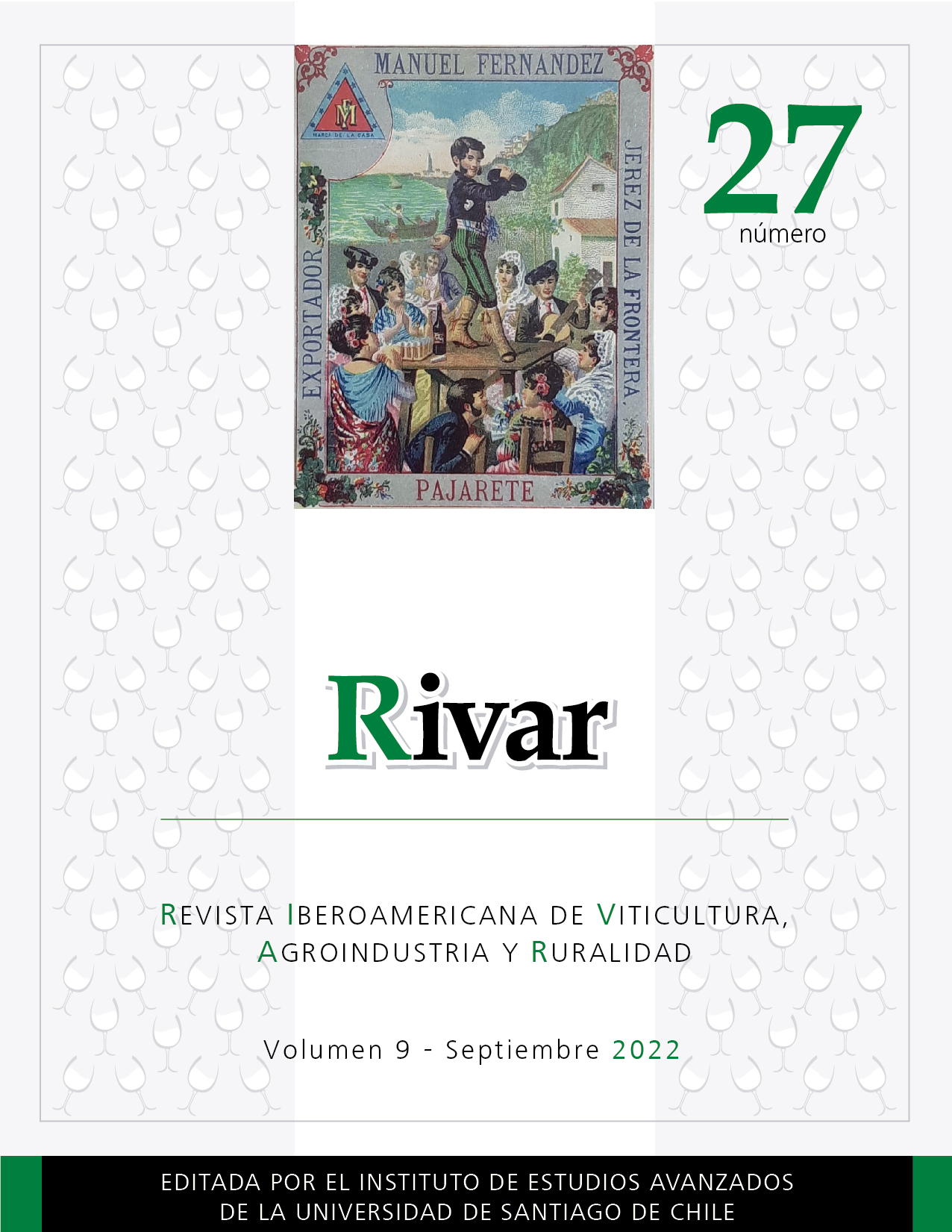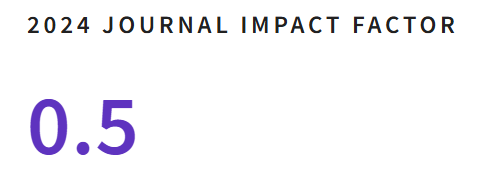Beneficiation of Venezuelan Criollo Cocoa: Variations in Proximal Composition, Methylxanthines and Polyphenols
DOI:
https://doi.org/10.35588/rivar.v9i27.5625Keywords:
Criollo cocoa, fat, total polyphenols, fermentation, theobromine, caffeineAbstract
The effect of the fermentation, drying and roasting process was studied through changes in the proximal chemical composition, methylxanthine and polyphenol contents in Venezuelan Criollo cocoa beans. The samples of unfermented, fermented and sun-dried beans came from a cocoa plantation located in “El Pedregal”, Mérida State, Venezuela. The roasting process was carried out conventionally at 120°, 25 min. The methodologies suggested by A.O.A.C.I. and COVENIN were used. Moisture, protein, ash and sugar values varied significantly (p≤0.05) between unfermented, fermented and sun-dried and roasted beans. No significant differences (p≤0.05) were observed between fermented and sun-dried grain (54.71%) and that subjected to roasting (54.68%). The theobromine and caffeine contents, varied in all the processes applied. The value of the theobromine/caffeine ratio was ≤ 2, evidencing that the sample is of the Criollo type. The high contents of (-)-epicatechin, procyanidin C1 and polyphenols were for unfermented and dry beans, with a significant effect of roasting on procyanidin B5, (-)-epicatechin and polyphenols. It was concluded that post-harvest processing and roasting affect the chemical components in the cocoa bean.
Downloads
References
Álvarez, C.; Pérez, E.; Láres, M.; Boulanger, R.; Davrieux, F.; Assemat, S. y Cros, E. (2016). “Identification of the Volatile Compounds in the Roasting Venezuela Criollo Cocoa Beans by Gas Chromatography-Spectrometry Mass”. Journal of Nutritional Health & Food Engineering 5(4):1-8. DOI https://doi.org/10.15406/jnhfe.2016.05.00178
Álvarez, C.; Pérez, E.; Cros, E.; Lares, M.; Davrieux, F. y Assemat, S. (2012a). “The Use of Near Infrared Spectroscopy to Determine the Fat, Caffeine, Theobromine and (-)-Epicatechin Contents in Unfermented and Sun-Dried Beans of Criollo Cocoa”. Journal of Near Infrared Spectroscopy 20(2): 307-315. DOI https://doi.org/10.1255/jnirs.990
Álvarez, C.; Pérez, E.; Boulanger, R.; Lares, M.; Assemat, S.; Davrieux, F. y Cros, E. (2012b). “Identificación de los compuestos aromáticos en el cacao criollo de Venezuela usando microextracción en fase sólida y cromatografía de gases”. Vitae Revista de la Facultad de Química Farmacéutica 19(1): S370-S372. DOI https://doi.org/10.1016/j.recqb.2015.05.003
Arango, A.J. (2017). Evaluación del efecto de técnicas de fermentación en el sabor y aroma de cacao CCN-51 (Theobroma cacao L.) en la zona de Tumaco-Nariño. Tesis de maestría. Botogá, Universidad Nacional de Colombia.
Association of Official Analytical Chemists International (2000). Officil Methods of Analysis of the A.O.A.C.I. Washington, Helrich.
Cienfuegos-Jovellanos, F.E. (2016). Estudio del Contenido de Compuestos Bioactivos del Cacao y su Aplicación en la Obtención de un Ingrediente Rico en Polifenoles para el Diseño de un Chocolate Enriquecido. Tesis de doctorado. Murcia, Universidad de Murcia.
Cros, E.; Chanliau, S. y Jeanjean, N. (1999). “Post-Harvest: A key step in cocoa quality”. En Confectionery Science II. Proceedings of an International Symposium. Pensilvania, Penn State University, del 14 al 16 de noviembre de 1999: 80-96.
Comisión Venezolana de Normas Industriales (COVENIN). (1981). Cacao y derivados: Determinación de azúcares totales, N° 1697. Caracas, Ministerio de Fomento: 1-10. En http://www.sencamer.gob.ve/sencamer/normas/1697-81.pdf (consultado 22/07/2022).
____. (1995a). Cacao y derivados: Determinación de grasa cruda, N° 1340. Caracas, Ministerio de Fomento: 1-2. En http://www.sencamer.gob.ve/sencamer/normas/1340-1995.pdf (consultado 22/07/2022).
“”
____. (1995b). Granos de cacao N° 50. 2da. revisión. Caracas, Fondonorma: 1-4. En http://www.sencamer.gob.ve/sencamer/normas/50-95.pdf (consultado 22/07/2022).
Davrieux, F.; Assemat, S.; Sukha, D.; Portillo, E.; Boulanger, R.; Bastinelli, D. y Cros, E. (2007). “Genotype Characterization of Cocoa into Genetic Groups through Caffeine and Theobromine Content Predicted by NIRS”. Applications: 382-386.
De Fariñas, L.G.; De Bertorelli, L.O. y Parra, P. (2003). “Características químicas de la semilla de diferentes tipos de cacao de la localidad de Cumboto, Aragua”. Agronomía Tropical 53(2): 133-144.
Jiménez, J.; Amores, F.; Niklin, C.; Rodríguez, D.; Zambrano, F.; Bolaños, M.; Reynel, V.; Dueñas, A. y Cedeño, P. (2011). “Micro fermentación y análisis sensorial para la selección de árboles superiores de cacao”. Boletín Técnico 140. Quevedo, INIAP, Estación Experimental Pichilingue: 1-64.
Lares, M. y Pérez, E. (2015). “Types of Chocolate and their Nutritional Value—Chocolate as a Functional Food”. En Pérez, E. Chocolate: Cocoa Byproducts Technology, Rheology, Styling, and Nutrition. Nueva York, Nova Science Publishers: 118-142.
Lares, M.; Pérez, E.; Álvarez, C.; Perozo, J. y El’ Khori, S. (2013). “Cambios de las propiedades físico-químicas y perfil de ácidos grasos en cacao de Chuao, durante el beneficio”. Agronomía Tropical 63(1-2): 37-48.
Pallares-Pallares, A.; Estupiñán, M.R.; Perea V., J.A. y López G., L. J. (2016). “Impacto de la fermentación y secado sobre el contenido de polifenoles y capacidad antioxidante del clon de cacao CCN-51”. Revista Ion 29(2): 7-21.
Pancardo, L.A. (2016). Efecto del procesamiento del cacao (Theobroma cacao L.) en la capacidad antioxidante durante la obtención de licor y cocoa. Tesis de licenciatura. Veracruz, Universidad Veracruzana.
Perea, V.A.; Martínez, G.N.; Aranzazu, H.F. y Cadena, C.T. (2013). Características de calidad del cacao de Colombia. Catálogo de 26 cultivares. Bucaramanga, Universidad Industrial de Santander y Federación Nacional de Cacaoteros.
Pérez, E.; Gutiérrez, T. y Palomino, C. (2017). “Factores que definen la calidad del chocolate”. En Pérez, E.; Cañas, I y Gutiérrez, T. (eds.). Del cacao al chocolate. Madrid, Bellisco: 61-135.
Pérez, E. y Lares, M. (2017). “Tipos de chocolate y su valor nutricional”. En Pérez, E.; Cañas, I y Gutiérrez, T. (eds.). Del cacao al chocolate. Madrid, Bellisco: 211-235.
Portillo, P.E. (2006). Caracterisation de l’arôme du cacao de type Criollo: Influence des conditions de traitement post-recolte. Tesis de doctorado. Montpellier, Université de Montpellier II.
Price, L. y Buttler, L. (1977). “Rapid Visual Estimation and Spectrophotometric Determination of Tannin Content of Sorghum Grain”. J. of the Agric. and Food Chem. 25(6): 1268-1272. DOI https://doi.org/10.1021/jf60214a034
Vázquez-Ovando, A.; Ovando-Medina, I.; Adriano-Anaya, L.; Betancur-Ancona, D. y Salvador-Figueroa, M. (2016). “Alcaloides y polifenoles del cacao, mecanismos que regulan su biosíntesis y sus implicaciones en el sabor y aroma”. Archivos Latinoamericanos de Nutrición 66(3): 239-254.
Zapata, B.S., Tamayo, T. A. y Benjamín, A.R. (2013). “Efecto de la fermentación sobre la actividad antioxidante de diferentes clones de cacao colombiano”. Revista Cubana de Plantas Medicinales 18(3): 391-404.









